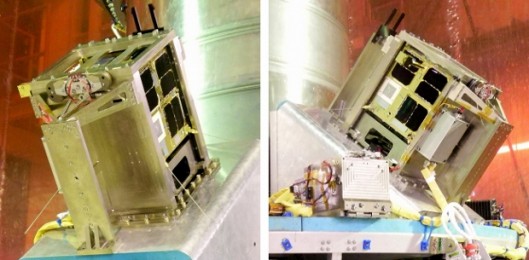
On Tuesday, the Defense Advanced Research Projects Agency (DARPA) announced the next stage in an ambitious project called Phoenix, which it hopes will bring about the first demonstration of robotic, in-orbit satellite servicing in 2015.
The servicing, however, won’t involve the repair of an existing satellite—instead, one that has already been retired will be scavenged for spare parts. If all goes well, the antenna (or aperture) of the defunct satellite will be linked with one or more small “satlets” that will return it to active duty.
“[Phoenix is a] modest effort to increase the return-on-investment for DoD [Department of Defense] space missions,” Dave Barnhart, a DARPA program manager, said at a recent press conference.
It costs a lot of money to put something into geosynchronous orbit, and not everything that’s been put there remains active. In many cases, this is because of the failure or obsolescence of only some of their hardware, while other parts remain perfectly viable and functioning. (In fact, we already know they’ve functioned after launch and deployment.)
In short, the Phoenix project is essentially a very complicated recycling program.
“If you have the ability to utilize hardware that’s up there, you can do this at a lower cost,” Barhart added.
Reducing space junk
Although many of the parts of satellites are highly specialized or internal to the structure, a few standard pieces—the aperture, solar arrays—are easily accessible and can be used on hardware with different purposes.
Barnhart described a system where there would be a single dedicated launch to put the robotic servicing hardware in space. After that, the program would start looking for commercial launches with extra space and weight available. These would be used to send up small satlets to rendezvous with the mechanic.
The DARPA manager suggested the process would be akin to putting spare parts into the repair platform’s toolbelt. Once that was done, the orbital mechanic would move into the graveyard orbit and make its way to a retired satellite (with the full permission of the satellite’s owner).
Once there, the goal is to neatly slice off the aperture while avoiding creating additional space debris in the process. That would then be connected to one or more satlets that would handle various functions, like pointing the aperture in the right direction, transmitting data through it, and providing power for the other functions. The exact collection of satlets that get attached will depend on how much the program intends to get out of the aperture.
Obviously, something like this requires having a lot of different pieces in place, and Barnhart was talking to the press because DARPA feels they’ve made progress in many areas and are ready to work on the remaining ones. He mentioned that the robotic arm was working, and they have prototypes of the cameras that would help manage the approach to and grappling of the target satellite. The agency is now working on specific tools for the arm to use, and how to safely handle the charge difference that can build up between different objects in space.
The processes will involve a mix of automated and controller-based software, and Barnhart said DARPA is also starting to test the teloperations system, which has both physical manipulators and a touchscreen interface to allow ground-based controllers to have some direct input on events taking place in orbit. To demonstrate its progress, DARPA has put together a video showing a simulation of its future mission, with embedded images of the real-world test hardware and software that are being used to make it a reality.
Youtube Video, Phoenix Program Demonstration
140 defunct satellites to be targeted
What’s next for the Phoenix program? Some of it involves testing the hardware in more realistic environments. Barnhart talked about looking for “N-degree of freedom facilities,” in which the test hardware could operate. DARPA researchers also intend to start finding ground station providers that are capable of tracking the servicing satellite as it moves to reach different graveyard orbits while supporting a full virtual environment on the ground.
Out of the 500 satellites in the graveyard orbits, DARPA has identified about 140 that have apertures that should be good for harvesting. The program has been allocated $180 million over four years to get the demonstration mission off the ground, and the pieces are starting to fall into place.
Longer term, however, the program is likely to depend on launch costs going down and the ability to hitch rides for satlets on existing launch schedules. The aperture usually isn’t expensive hardware, and Barnhart said it was only about 2-3 percent of a satellite’s entire mass. By reusing it, however, Barhnart said you can get a larger return on investment for your initial cost and amortize it over a larger number of years. In the end, getting Phoenix to work should save some money.
Probably more significantly, though, developing the technology could save money in other ways. Apertures sometimes fail to unfold once a satellite reaches orbit, and learning to manipulate them in space raises the prospect of repairing those failures. Apertures aren’t the only thing that can be salvaged, either.
Barnhart said that solar panels are also an obvious target, but they may require more specialized hardware to do power conversion, attach wiring, etc.—he told Ars that these added another layer of complexity DARPA chose to avoid for the demonstration mission.
But if Phoenix ever becomes capable of handling these added complexities, then the program could potentially become self-sustaining.
Source: Ars Technica








